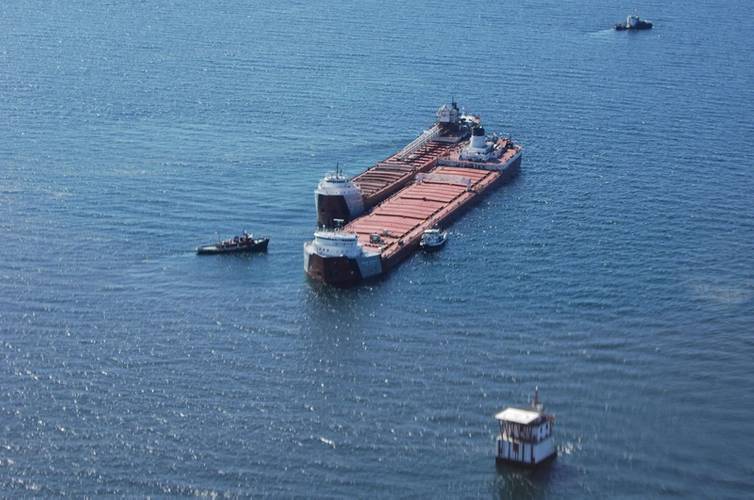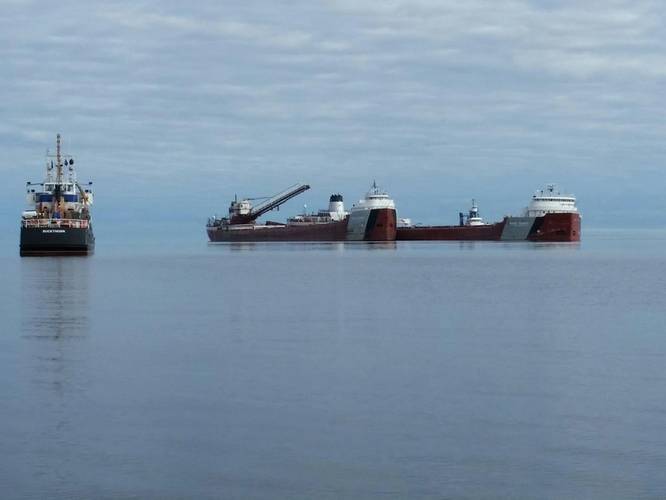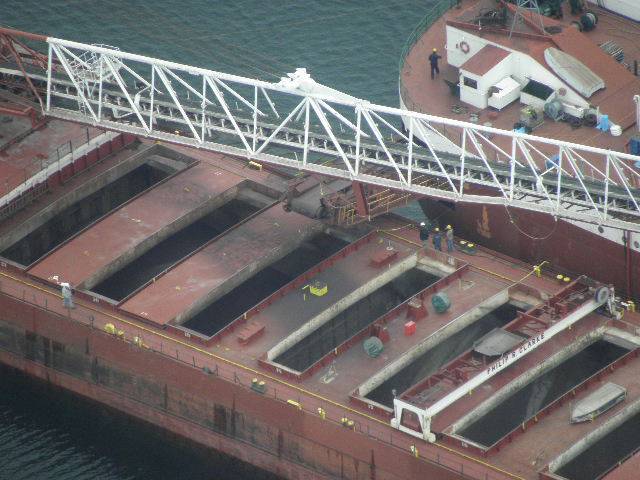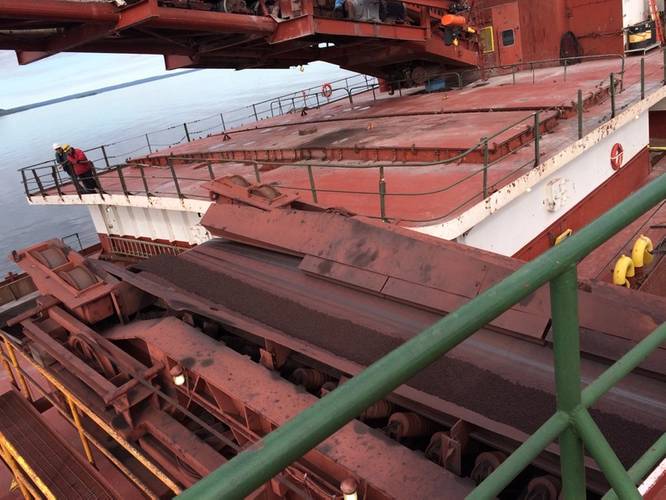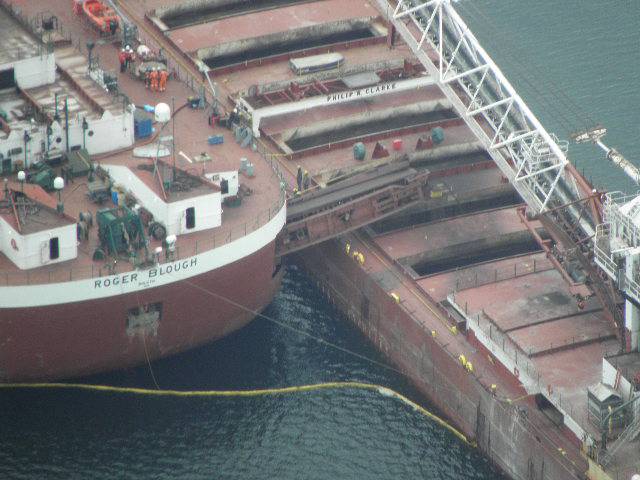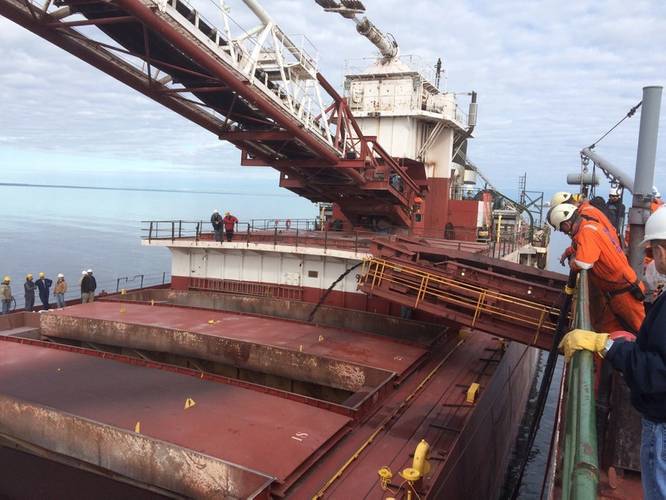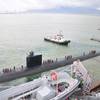The U.S. Coast Guard continues to monitor and respond as lightering operations begin on the motor vessel Roger Blough, Friday, after the vessel ran aground May 27 on Gros Cap Reef in Whitefish Bay in Lake Superior.
The Philip R. Clarke arrived on scene with the Blough Thursday afternoon, and lightering operations started Friday at 5:45 a.m.
The safety perimeter has been increased from 500 yards to 750 yards.
Plans continue to progress to safely free the Blough from Gros Cap Reef through the combined efforts of Canadian partners, company representatives and the U.S. Coast Guard.
Boom remains in place at the rear of the vessel as a preventative measure against pollution and Canadian Coast Guard Environmental Response personnel are in Sault Ste. Marie, Ontario, with a large inventory of pollution control equipment with procedures in place and equipment readily available for all possible ship-source spill scenarios.
The U.S. Army Corps of Engineers will be providing assistance for lightering operations and will ensure the Birch Point Range channel is safe for navigation after the Blough is removed from the grounding site.
There have been no changes in the rate of flooding and the crew remains in good condition.
A Transport Canada overflight was conducted Thursday afternoon and reported no pollution.









